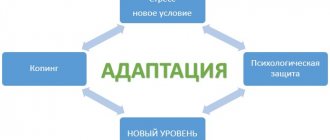Higher nervous activity is a system that allows the human and animal body to adapt to variable environmental conditions. Evolutionarily, vertebrates have developed a number of innate reflexes, but their existence is not enough for successful development.
In the process of individual development, new adaptive reactions are formed - these are conditioned reflexes. Outstanding domestic scientist I.P. Pavlov is the founder of the doctrine of unconditioned and conditioned reflexes. He formed the conditioned reflex theory, which states that the acquisition of a conditioned reflex is possible through the action of a physiologically indifferent irritation on the body. As a result, a more complex system of reflex activity is formed.
I.P. Pavlov - the founder of the doctrine of unconditioned and conditioned reflexes
An example of this is Pavlov's study of dogs that salivated in response to a sound stimulus. Pavlov also showed that innate reflexes are formed at the level of subcortical structures, and new connections are formed in the cerebral cortex throughout the life of an individual under the influence of constant irritations.
Conditioned reflexes
Conditioned reflexes are formed on the basis of unconditioned ones, in the process of individual development of the organism, against the backdrop of a changing external environment.
The reflex arc of a conditioned reflex consists of three components: afferent, intermediate (intercalary) and efferent. These links carry out the perception of irritation, the transmission of impulses to cortical structures and the formation of a response.
The reflex arc of the somatic reflex performs motor functions (for example, flexion movement) and has the following reflex arc:
The sensitive receptor perceives the stimulus, then the impulse goes to the dorsal horn of the spinal cord, where the interneuron is located. Through it, the impulse is transmitted to the motor fibers and the process ends with the formation of movement - flexion.
A necessary condition for the development of conditioned reflexes is:
- The presence of a signal that precedes the unconditional;
- the stimulus that will cause the catch reflex must be inferior in strength to the biologically significant effect;
- normal functioning of the cerebral cortex and the absence of distractions are mandatory.
Conditioned reflexes are not formed instantly. They are formed over a long period of time under constant observance of the above conditions. In the process of formation, the reaction either fades away, then resumes again, until stable reflex activity occurs.
An example of developing a conditioned reflex
Classification of conditioned reflexes:
- A conditioned reflex formed on the basis of the interaction of unconditioned and conditioned stimuli is called a first-order reflex .
- Based on the classical acquired reflex of the first order, a reflex of the second order .
Thus, a third-order defensive reflex was formed in dogs, the fourth could not be developed, and the digestive reflex reached the second. In children, conditioned reflexes of the sixth order are formed, in an adult up to the twentieth.
The variability of the external environment leads to the constant formation of many new behaviors necessary for survival. Depending on the structure of the receptor that perceives the stimulus, conditioned reflexes are divided into:
- Exteroceptive - irritation is perceived by body receptors and predominate among reflex reactions (taste, tactile);
- intraceptive - caused by an effect on internal organs (changes in homeostasis, blood acidity, temperature);
- proprioceptive - are formed by stimulating the striated muscles of humans and animals, providing motor activity.
There are artificial and natural acquired reflexes:
Artificial ones arise from the action of stimulation that has no connection with an unconditioned stimulus (sound signals, light stimulation).
Natural ones are formed in the presence of a stimulus similar to the unconditioned one (the smell and taste of food).
Examples
For the body’s reaction to occur, such as the release of saliva when knives and forks clink, as well as when an animal’s feeding cup is knocked (in humans and dogs, respectively), an indispensable condition is the repeated coincidence of these sounds with the process of providing food.
In the same way, the sound of a bell or the turning on of a light bulb will cause the dog's paw to flex if these phenomena have repeatedly occurred accompanied by electrical stimulation of the animal's leg, as a result of which an unconditioned type of flexion reflex appears.
The conditioned reflex is the child's hands being pulled away from the fire and subsequent crying. However, these phenomena will only occur if the type of fire, even once, coincides with a burn.
Unconditioned reflexes
These are innate mechanisms that ensure the preservation of the integrity of the body, the homeostasis of the internal environment and, most importantly, reproduction. Congenital reflex activity is formed in the spinal cord and cerebellum and is controlled by the cerebral cortex. Typically, they last a lifetime.
Reflex arcs of hereditary reactions are laid before the birth of a person. Some reactions are characteristic of a certain age and then disappear (for example, in small children - sucking, grasping, searching). Others do not manifest themselves at first, but appear (sexually) after a certain period of time.
Unconditioned reflexes are characterized by the following features:
- Occur regardless of the consciousness and will of a person;
- specific - manifested in all representatives (for example, coughing, salivation at the smell or sight of food);
- endowed with specificity - they appear when exposed to a receptor (the reaction of the pupil occurs when a beam of light is directed to photosensitive areas). This also includes salivation, secretion of mucous secretions and enzymes of the digestive system when food enters the mouth;
- flexibility - for example, different foods lead to the secretion of a certain amount and varied chemical composition of saliva;
- On the basis of unconditioned reflexes, conditioned ones are formed.
Unconditioned reflexes are needed to fulfill the needs of the body; they are constant, but as a result of illnesses or bad habits they can disappear. So, when the iris of the eye is diseased, when scars form on it, the reaction of the pupil to light exposure disappears.
Classification of unconditioned reflexes
Congenital reactions are classified into:
- Simple (quickly remove your hand from a hot object);
- complex (maintaining homeostasis in situations of increasing CO2 concentration in the blood by increasing the frequency of respiratory movements);
- the most complex (instinctive behavior).
Classification of unconditioned reflexes according to Pavlov
Pavlov divided innate reactions into food, sexual, protective, orientation, statokinetic, homeostatic.
Food includes the secretion of saliva at the sight of food and its entry into the digestive tract, the secretion of hydrochloric acid, gastrointestinal motility, sucking, swallowing, chewing .
Protective ones are accompanied by contraction of muscle fibers in response to an irritating factor. Everyone is familiar with the situation when a hand reflexively withdraws from a hot iron or a sharp knife, sneezing, coughing, watery eyes.
Approximate ones arise when sudden changes occur in nature or in the body itself. For example, turning the head and body towards sounds, turning the head and eyes towards light stimuli.
Sexual ones are associated with reproduction, preservation of the species, this also includes parental (feeding and caring for offspring).
Statokinetic ones provide upright posture, balance, and body movement.
Homeostatic - independent regulation of blood pressure, vascular tone, respiratory rate, heart rate.
Classification of unconditioned reflexes according to Simonov
Vitals for maintaining life (sleep, nutrition, saving energy) depend only on the individual.
Role roles arise during contact with other individuals (procreation, parental instinct).
The need for self-development (the desire for individual growth, to discover new things).
Innate reflexes are activated when necessary due to a short-term violation of internal constancy or variability in the external environment.
Classification of instincts
Unconditioned reflexes are very strong. Only under certain conditions, when their manifestation becomes unnecessary, can they disappear. For example, the canary, domesticated about three hundred years ago, currently does not have the instinct to build nests. The following types of unconditioned reflexes are distinguished:
— The instinct of self-preservation, which is the body’s reaction to a variety of physical or chemical stimuli. Such reflexes, in turn, can manifest locally (withdrawal of the hand) or be complex (flight from danger). - Food instinct, which is caused by hunger and appetite. This unconditioned reflex includes a whole chain of sequential actions - from searching for prey to attacking it and further eating it. - Parental and sexual instincts associated with the maintenance and reproduction of the species.
— A comfortable instinct that serves to keep the body clean (bathing, scratching, shaking, etc.). - Orienting instinct, when the eyes and head are turned towards the stimulus. This reflex is necessary to preserve life. — The instinct of freedom, which is especially clearly expressed in the behavior of animals in captivity. They constantly want to break free and often die, refusing water and food.
Comparison table between conditioned and unconditioned reflexes
| Comparison of the characteristics of conditioned (acquired) and unconditioned (innate) reflexes | |
| Unconditional | Conditional |
| Congenital | Acquired during life |
| Present in all representatives of the species | Individual for each organism |
| Relatively constant | Appear and disappear with changes in the external environment |
| Formed at the level of the spinal cord and medulla oblongata | Carried out through the work of the brain |
| Laid in utero | Developed against the background of innate reflexes |
| Occurs when a stimulus acts on certain receptor areas | Manifest under the influence of any stimulus that is perceived by the individual |
Higher nervous activity operates in the presence of two interrelated phenomena: excitation and inhibition (congenital or acquired).
Reflex arc
Each reflex has its own reflex arc, which consists of the following five parts:
- a receptor located in tissues and organs and perceiving irritations from the external and internal environment;
- sensitive nerve fiber, which transmits impulses generated when the receptor is excited to the nerve center;
- nerve center, which consists of sensory, intercalary, motor nerve cells located in the brain;
- motor nerve fiber, which transmits the excitation of the nerve center to the working organ;
- working organ - muscles, glands, blood vessels, internal organs and others.
Braking
External unconditional inhibition (innate) is carried out by the action of a very strong stimulus on the body. The termination of the conditioned reflex occurs due to the activation of nerve centers under the influence of a new stimulus (this is transcendental inhibition).
When the organism under study is exposed to several stimuli at the same time (light, sound, smell), the conditioned reflex fades, but over time the indicative reflex is activated and the inhibition disappears. This type of braking is called temporary.
Conditioned inhibition (acquired) does not arise on its own; it must be developed. There are 4 types of conditioned inhibition:
- Extinction (disappearance of a persistent conditioned reflex without constant reinforcement by the unconditioned);
- differentiation;
- conditional brake;
- delayed braking.
Inhibition is a necessary process in our life. In its absence, many unnecessary reactions would occur in the body that would not be beneficial.
Example of external inhibition (dog's reaction to a cat and the SIT command)
Reaction components
The body's reaction to irritation is a change in breathing, secretion, movement, etc. As a rule, unconditioned reflexes are quite complex reactions. That is why they contain several components at once. For example, the defensive reflex is accompanied not only by defensive movements, but also by increased breathing, accelerated activity of the heart muscle, and changes in blood composition. In this case, vocal reactions may also appear. As for the food reflex, there are also respiratory, secretory and cardiovascular components.
Conditioned reactions usually reproduce the structure of unconditioned ones. This occurs due to the stimulation of the same nerve centers by stimuli.
How to train your brain to change?
Structural changes in the brain form long-term memory, where our habits “live.” But deep changes do not happen in one day, it takes time. The most common statement is that a habit is developed in 21 days. But everything is individual. It all depends on genes, past experience, and brain training.
Our brain and muscles have a lot in common: they respond to training , get tired, work better from some foods, and become lazy from others. And also - they atrophy without new exercises (physical or mental), requiring a whole set of exercises to “pump up”.
It would seem, take it and train. But it's not that simple. Probably, every person has his own personal closet of abandoned good habits - the intention to learn English, save money, go to bed on time, eat right and do things right away, without putting it off until later, gathers dust there. There is one difficulty everywhere: you want to make changes, but the force of friction slows down any innovations.
There are several ways to cancel the force of friction. You can choose the one that suits you.
Technique 1. Simple steps.
The secret of the brain is that once it learns to do something easy, it will repeat something more difficult. Here are 10 useful habits that will not require Herculean efforts, but will change the quality of life:
- Drink a glass of water immediately after waking up and drink enough water throughout the day.
- Avoid using your smartphone or TV 30 minutes before bedtime.
- Wipe your face with an ice cube after washing your face in the evening.
- Fall asleep no later than 11 pm, get up 30 minutes earlier.
- Read 30 pages from a book every day.
- In the evening, remember all the good things that happened during the day.
- Do good deeds every day.
- Save 10% of your income.
- Maintain home accounting.
- Slow down for 5 minutes and daydream.
Technique 2. Two-phase method of habit formation.
The method consists of two steps: loading and pinning.
The first boot step is not easy, because you will have to adhere to the new habit with fanatical precision. But this stage does not last long. When it passes, you can relax. For example, you decide to walk 10 thousand steps a day. You cannot make exceptions either in the snow, or after a hard day, or on a holiday. At this stage, it is important to train your brain to walk.
The second step - supportive - lasts longer, but allows you to be more flexible. For example, you can relax on Sunday and complete the required steps on another day. Or replace walking with a short jog or ski walk.
To reinforce the habit, you can add triggers: for example, buy a beautiful suit that you really like in. When the initial enthusiasm subsides, the trigger will go off. Tell yourself: I'm not going for a walk, I'm just trying on my nice tracksuit. Put on a suit and go for a walk without any problems. Well, don’t let such beauty go to waste.
History of the issue, starting from the 17th century
The famous Frenchman and great scientist Rene Descartes, back in the 17th century, became interested in human reactions to sharp stimuli and for the first time gave them a detailed description.
But in those distant times, psychology was not yet considered a science. Therefore, Descartes concluded that any reaction to a stimulus is just a reflection of our knowledge about the properties of surrounding objects and substances.
The concept of “reflex” owes its origin to the talented Russian scientist I.M. Sechenov. He was the first in the world to prove and show that any reason for a person’s mental state in general, and all his actions in particular, lies solely in the influence of the external environment on the nervous system. Simply put: if the senses are not irritated, then a person’s emotional life immediately comes to naught. This is where the famous expression comes from: “Be tired until you lose your senses.” After Sechenov’s death, his scientific research was continued by the great academician I.P. Pavlov.











